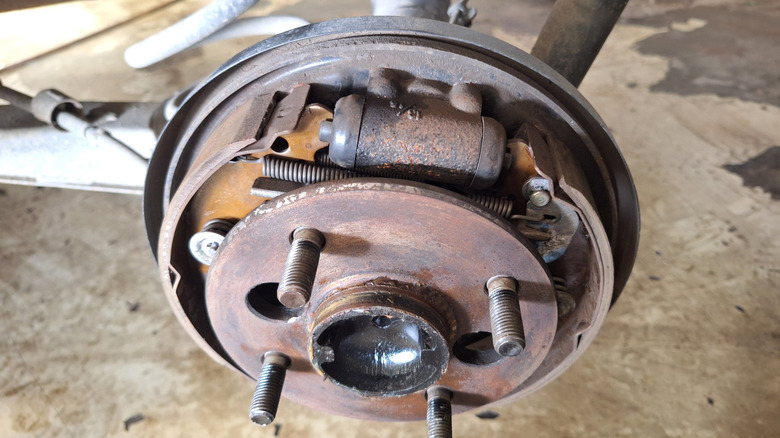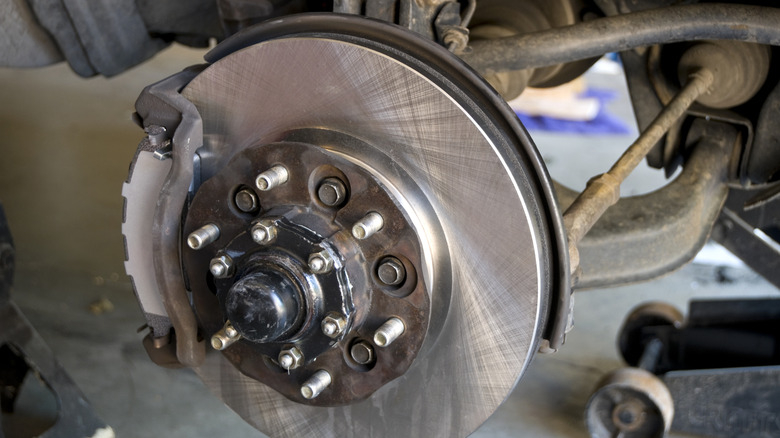
Technology around us is growing at a faster rate than we can say "What's the Wi-Fi password?" However, there are still some things that haven't changed since they were invented and are still in use today. Take, for instance, the toothbrush or a safety pin. One such product in the automotive world is the drum brake, which is still seen in budget cars built around the world. However, most modern cars have moved to disc brakes.
It wasn't always like that. Drum brakes have been around since their invention in the early 1900s. They went on to become mainstream, with almost all vehicles using a four-wheel drum brake system for decades. However, by the 1960s disc brakes started gaining traction, first appearing on the front wheels of most cars owing to their superior performance. However, drum brakes held on and can still be seen today.
Drum brakes are still somewhat relevant today due to their simple construction. As the name suggests, these consist of a metal drum that is fixed to your wheel at the center and rotates with the wheel. It has brake shoes that sit inside the drum and press against the drum's inner surface when the brakes are applied. The resultant friction slows down the rotating drum and the wheel it is fixed to.
 Ari Triyanto/Shutterstock
Ari Triyanto/Shutterstock
The arrival of disc brakes from company's like Brembo pushed drum brakes to the sidelines. They work on a similar principle as drum brakes but are more efficient. Instead of a hydraulic force pushing brake shoes against the inside of a drum, a disc brake has two brake pads inside a caliper pressing against a metal disc attached to a wheel, from both sides. A disc brake's open construction allows for better heat dissipation, making it more resistant to brake fade under hard usage.
Disc brakes also offer better stopping power, with a more linear pedal response. They also offer better wet weather performance as water is easily expelled from the brake disc surface. In terms of serviceability, disc brakes are easier to monitor and work on. High-performance vehicles use disc brakes on all four wheels as they offer superior and consistent performance even with hard braking.
The drawbacks of drum brakes mainly stem from their closed design. This design traps heat, which affects its performance during repeated braking sessions, like when you are driving down a hill. Also, water getting into a drum brake can affect its performance. The superior and reliable performance of disc brakes means most modern cars have switched from drum brakes to disc brakes.
 Terminator1/Getty Images
Terminator1/Getty Images
However, don't expect drum brakes to go extinct anytime soon. They have just been relegated to the second choice or a support system in modern budget car's braking setup, where the disc brake does the heavy lifting. In fact, drum brakes can be found in thoroughly modern models like the Audi Q4 E-Tron.
So how do car makers get away with drum brakes on the rear wheels? When you brake, a car's weight shifts forward, putting more stress on the front wheels. That's why you need better brakes — think disc brakes — on the front wheels and can get away with drum brakes at the rear. Drums brakes are used here as they are cheaper to manufacture than disc brakes. This front disc-rear drum setup is used in most modern budget vehicles as it is cost-effective without sacrificing optimum braking performance.
One of the other advantages of drum brakes is their longer service intervals. Under normal driving conditions, brake shoes inside a drum brake can last between 30,000 and 40,000 miles, while the drum itself can last between 150,000 and 200,000 miles. This is because the brake shoes have a larger friction contact area compared to brake pads and thus distribute brake force and heat over a wider surface area than a disc, reducing wear and tear on the friction area.














